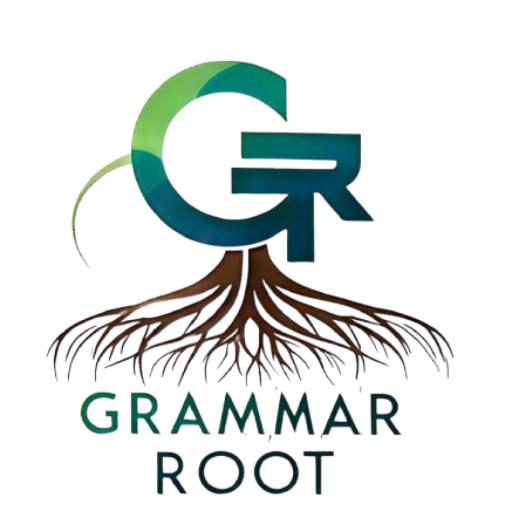The English language is filled with words that are pronounced the same but have different meanings and spellings. A perfect example of this confusion is the words lead and LEED. Both sound the same, but they represent very different concepts. Whether you’re writing an email, an academic paper, or even a marketing flyer, using the right form is crucial to clarity and accuracy. In this article, we’ll explore lead vs LEED, diving into the meanings, usage, and real-life scenarios for each. We’ll also look at similar confusions like leads vs Leeds and clarify how to spell and pronounce these tricky words.
What is Lead?
Lead is the most common form of the word and has several meanings, depending on the context. Here are a few:
- Lead as a Verb: This refers to the act of guiding or directing someone or something.
- Example: “She will lead the team to success in the new project.”
- Lead as a Noun: It can refer to a heavy, malleable metal or a position of authority.
- Example: “The lead singer of the band performed beautifully.”
- Lead in a Sales Context: In marketing and sales, a lead refers to a potential customer or client.
- Example: “We got several leads at the trade show this week.”
- Lead in Journalism: In writing, particularly in journalism, the lead is the introductory paragraph or sentence that summarizes the most important part of the story.
- Example: “The lead of the article grabbed my attention immediately.”
What is LEED?
LEED, on the other hand, stands for Leadership in Energy and Environmental Design. It is a certification program used to recognize buildings that are environmentally friendly and energy-efficient. The term is almost exclusively used in the context of architecture, construction, and sustainability.
- Example: “The new building received a LEED Gold certification for its energy-efficient features.”
Unlike lead, which can be used as a noun, verb, or adjective, LEED is only a noun, and it’s almost always capitalized because it’s an acronym.
A Real-World Scenario about Lead vs LEED:
Imagine you’re writing an email to a client about a new office building you’ve just designed. Here’s how you would use lead and LEED:
Email Example 1: Using Lead
Subject: Leading Your Team Toward Success!
Dear Sarah,
I hope you’re doing well. As we discussed earlier, I will lead the development of the marketing strategy for your new product launch. I’ll be working closely with your team to ensure that everything is on track.
Let me know if you have any questions.
Best regards,
John Doe
In this case, lead refers to guiding or directing someone or something.
Email Example 2: Using LEED
Subject: LEED Certification for Our New Building
Dear Sarah,
I’m thrilled to inform you that our new building has been awarded the LEED Platinum certification, thanks to its eco-friendly and sustainable design. This certification highlights our commitment to environmental responsibility.
Looking forward to your thoughts on the project!
Best regards,
John Doe
In this email, LEED is used to refer to the certification awarded for environmentally responsible building practices.
Leads or Leeds?
Let’s now consider leads vs Leeds. These two words are easily confused because of their similar pronunciation, but they have entirely different meanings.
- Leads: This is the plural form of lead (the noun), referring to potential clients, pieces of information, or the front position in a race or event.
- Example: “We received many leads during our sales campaign.”
- Leeds: This refers to a city in the United Kingdom, located in West Yorkshire.
- Example: “I’m planning a trip to Leeds next month for a conference.”
Another Common Mix-Up about Lead vs Led:
It’s easy to confuse lead (present tense) with led (past tense), as they sound the same. However, they are different in usage:
- Lead (present tense): To guide or direct.
- Example: “She will lead the meeting tomorrow.”
- Led (past tense): The past form of lead, meaning the act of having guided or directed.
- Example: “He led the team to victory last year.”
How to Spell Lead:
It’s important to remember that lead is spelled the same way, regardless of its meaning, whether it’s about guiding, the metal, or in the sales context. However, LEED should always be written in capital letters as it refers to the certification program.
Lead Pronunciation
The pronunciation of lead (in all its meanings) is /lɛd/, rhyming with “red.” Even when talking about LEED, which sounds similar, the difference in context will typically clarify the meaning.
A Quick Comparison of Lead vs LEED:
| Aspect | Lead | LEED |
|---|---|---|
| Pronunciation | /lɛd/ | /liːd/ |
| Type | Noun, Verb (and sometimes Adjective) | Noun (acronym for Leadership in Energy and Environmental Design) |
| Context | Leadership, Metal, Sales, Journalism, etc. | Sustainable Architecture and Design Certification |
| Capitalization | Not typically capitalized unless at the start of a sentence | Always capitalized (acronym) |
When to Use Lead and LEED Correctly: 20 Key Points
- Lead refers to a guide or someone in charge, while LEED refers to an environmental certification.
- Use lead when talking about leading a group or project.
- LEED should only be used in the context of sustainable building practices.
- When writing emails or reports, consider if the word is related to leadership (use lead) or building sustainability (use LEED).
- Leads is the plural form of lead when referring to potential customers.
- Always capitalize LEED because it is an acronym for a formal certification system.
- Lead in the metal sense refers to a toxic substance, like in lead paint.
- When speaking about lead in sales, it means a potential customer or contact.
- LEED is never used to describe a person or thing; it’s specifically about buildings.
- Lead is used to describe someone who guides others in leadership roles.
- Always use LEED when discussing green buildings or eco-friendly architecture.
- The past tense of lead is led. “She led the team yesterday.”
- Avoid confusing lead (the verb) with led (past tense).
- Leads can also refer to newspaper or news stories that capture attention.
- Use lead when referring to guiding or directing in any profession or context.
- Leeds refers to a city in the UK, not related to either LEAD or LEED.
- Lead can refer to control or position, like in lead role or lead actor.
- Lead and led are not interchangeable: lead is present tense; led is past tense.
- LEED is a sustainable certification, usually awarded after building construction.
- Always clarify your meaning based on context—whether discussing leadership or LEED certification.
Conclusion
In conclusion, understanding when to use lead or LEED (and leads or Leeds) is crucial to avoiding confusion in both casual and professional writing. By following the examples and tips provided in this article, you’ll be able to confidently navigate these tricky terms, ensuring clarity in your communication. Whether you’re discussing the lead of a team or a LEED-certified building, the right word can make all the difference

Johan is an professional & experienced blogger passionate about language and writing on Grammar root. He shares his expertise in grammar, punctuation, and effective communication, making complex rules simple and accessible for readers. With a knack for clear explanations and engaging content, Steel aims to help others master the art of language.

